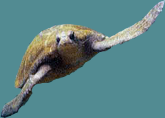What is the Central Database?
The centralized database will consist of a comprehensive collection of information about the Galapagos Islands that is available over the Internet. Data and information from previous monitoring projects will be integrated into the central database, including projects and publications from the Charles Darwin Foundation and other NGOs. The data from the newly proposed monitoring systems will also be uploaded onto the database, and updated regularly. In addition, every effort will be made to establish a library of scientific papers about the islands, gathered from universities and journals. Ideally, this database would be free to the public, but in some cases, certain journals require a fee before its articles can be accessed. The centralized database would then provide a link to the article, and the reader would have to pay the price for that particular publication in accordance with the journal's rules.
This database is not just for people interested in science. It will become a part of the natives' lives. Updates on the Green Village construction will be placed there, along with news from the Biopreserve committee and the monitoring systems. General information, such as a list of contacts, job opportunities, and up-to-date laws and regulations on Galapagos preservation will also be listed. Most of the information will be directly accessible by the public, but some sections, such as financial information about the International Trust, will be secure and available to a select few. Lastly, tourists can also visit the database for information about tourism on the islands, park rules, and possible places to stay.


